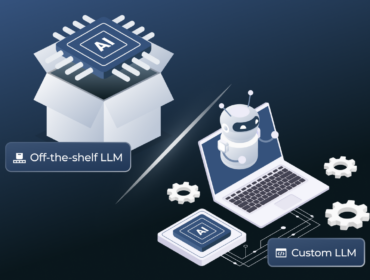One of the most widely spread misconceptions about blockchain is when it is fully equalled with crypto.
Cryptocurrencies indeed cannot function without blockchain technology, however, cryptomarket is not the only industry that is heavily relying on the blockchain these days.
Banks and insurance companies, clinics and laboratories, design and music studios, government and non-profit agencies — all these types of organizations may be using blockchain in their daily operations, without end customers even knowing it.
Supply chain management is no exception in this gaining momentum trend. Let’s use warehouses and logistics systems as a business-centric example demonstrating all the not so obvious benefits of blockchain technology application in the real sectors of the economy.
Understanding blockchain as a business solution
The keyword for a better understanding of blockchain as a concept is “transaction.” Blockchain is an Internet-based, distributed technology that does an interesting trick — combining two, seemingly contradictory each other features: transparent, publicly visible transactions on the one hand and heavy encryption with maximum data security on the other.
Three more keywords would be needed to understand how such public-but-secure transactions might be possible — distributed ledger, node, and miner.
Distributed ledger is a blockchain infrastructure and its functional protocol simultaneously. Visually, it can be presented as a network of numerous entities that has no centralized authorities.
How can a distributed system be more secure than a centralized system where the core server is expected to monitor potential data manipulations?
The answer is in the multiplicity itself: any decentralized data system would be essentially immune to data breach simply because all its data is stored as identical copies across the whole network.
In more simple terms: if you want to steal from a decentralized system or fabricate fragments of data in it — you would have to do it not in one but in thousands of places at the same time. And that’s just technically not doable.
Now to node. Nodes are blocks of data; they are “bones” of the distributed ledger. Some refer to one node as one computer, others as one blockchain user in the established network.
Miner is the type of a node that adds transactions to the blockchain. Miners are basically managers responsible for securing the blockchain network.
With this Blockchain 101 theory in mind, let’s now move to more practical details.
Ways to use blockchain in today’s supply chains
As we’ve mentioned above, one of the key features of blockchain as a technology is that it can securely store details on data origin and its transaction history. And this is also the key reason why blockchain is now so actively used in logistics — because it makes the full history of a product origin accessible to any participant of a supply chain network.
Thus, blockchain in supply chain management is used to:
- Check and prove the product’s origin and composition
- Time tag products and deliveries
- Make in-house processing of supplies quicker, thus, more efficient
- Substitute manual paperwork with instant scanning
- Report on product provenance.
Oil suppliers in the United Arab Emirates, for example, are using blockchain to report to their investors and end customers on the daily volumes of oil produced and shipped worldwide. With the blockchain technology introduced, both investors and clients can get instant access to such a tracking system, and they don’t need to send requests whenever they need any status updates.
Interestingly, food companies and fashion brands seem to be using blockchain technologies for exactly the same purposes — to verify the provenance. Ethical consumption is the keyword here. Nowadays, the constantly growing number of consumers are proactively concerned with such issues as local consumption, supporting equal rights in working conditions, not sponsoring producers that rely on child labor, etc. Blockchain is one of the easiest ways to ensure the legitimate provenance of a product to be purchased.
Other benefits of using blockchain in supply chains and warehouses
Data transparency is the number one advantage of blockchain-based technologies, of course, but not the only one.
Other benefits already appreciated by the suppliers include the following:
- Elimination of many manual, pen-and-paper processes. Paperwork organized in an old-school way has a long list of typical flops: typos, mistakes due to distracted attention, missing signature or missing page, the list goes on. Besides, time spent on manual processing of invoices and certificates is always measured in hours, not minutes. With blockchain-based tagging and scanning of products it can be minimized to literally seconds.
- Reduced spending on warehouse management. Quicker processing of orders always means less accompanying costs, starting from man/hour expenditures and ending with even a monthly electricity bill.
- Extra processing capacity. The logic is quite simple here: quicker processing means more freed up space in a warehouse, and more free space means more incoming orders can be processed. And more orders obviously convert in extra income.
- Reputational gains. Nothing is more beneficial for customer loyalty and client retention rates than the increased efficiency of orders processing and zero-mistake performance. Blockchain can guarantee both.
Blockchain in supply chain management is clearly gaining momentum but, to be fair, it also has some reservations when it comes to the actual implementation. Let’s briefly consider the most common of these reservations.
Old habits die hard
Truth be told, supply chain management is already overloaded with software. SCMs, lean inventory, invoicing, orders processing — suppliers have been using various SaaS tools for decades by now. Introducing one more tool that is extremely open and transparent instead of more traditional software solutions might face some resistance in the early days.
Besides, blockchain would require agreement from all the participants involved. It is doable, but all the future benefits must be thoroughly calculated and presented in the most convincing and measurable way.
Passing the transparency test
Switching to blockchain might become a severe cleansing for your list of suppliers. Not everyone is morally ready for such a high degree of traceability along the whole supply chain. You can make exceptions (provided you trust your suppliers without any proof of provenance) — or you can make conclusions.
Fear of delegating to third-party developers
Introducing blockchain into your supply chain means you are entrusting loads of business data, yours and that of your partners, to an external team, at least for the time of development and launch. For obvious reasons, this might sound risky, with freelancing especially.
The general recommendations on risks minimization here would be the same as when you choose a new business partner:
- Check recommendations, reviews, and success stories online;
- Analyze the portfolio of previous projects (primarily, has this team already worked with suppliers or retailers before you?)
- In the case of a blockchain development company, how long have they been on the market?
These three answers will tell you all you need to know, for starters.





![What is blockchain supply chain management What’s the EU Artificial Intelligence Act and How to Comply? [Webinar]](https://unicsoft.com/wp-content/uploads/2024/03/Cover_1140_v1.1-370x280.png)

